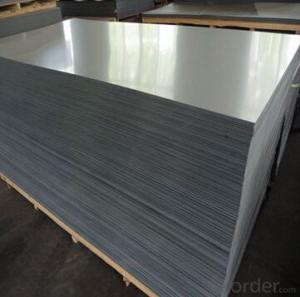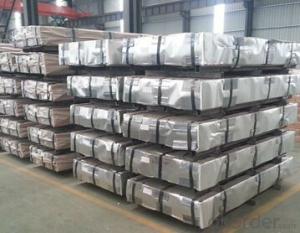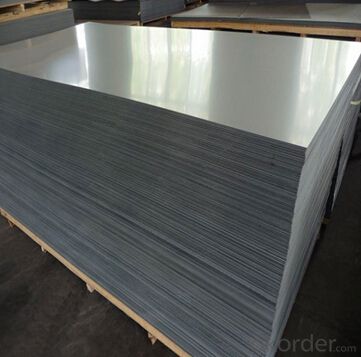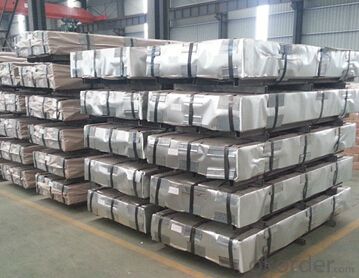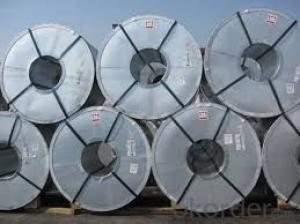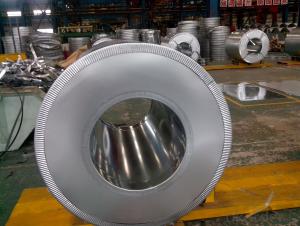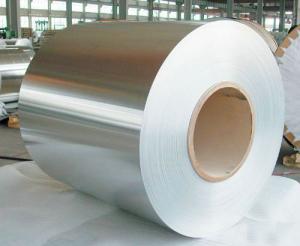Hot dipped Galvanized steel coil Z275 No spangle 0.15mm
- Loading Port:
- Tianjin
- Payment Terms:
- TT OR LC
- Min Order Qty:
- 25 m.t.
- Supply Capability:
- 10000 m.t./month
OKorder Service Pledge
OKorder Financial Service
You Might Also Like
Galvanized Steel Sheet
1.Thickness: 0.15mm - 3.5mm
2.Width: 600mm - 2000mm
3.Length: As you request
Specifications of Hot Dip Galvanized Steel Sheet/Plate:
1) Capacity: about 1,5000 tons per month for the steel sheet and coil product.
2) Grade: SGCC, DX51D, Q195, all according to the customer's request
3) Standard: JIS G3302 1998, ASTM A653M/A924M 2004, all according to the customer's request
4) Thickness: 0.15mm - 3.5mm, all available.
5) Width: 600mm - 2000mm , all available.
6) Length: we can adjust the length according to your request
7) Elongation: Min. 7%
8) Zinc coating weight: Min. 60gm/mm2, double side
9) Tensile strength: 28.1 - 49.2kgf/mm2
10) Spangle: regular spangle, minimized spangle and zero spangle
11) Surface treatment: chemical passivating treatment, oils, passivating oils, Anti-finger print;
12) Edge: mill edge, cut edge
13) Min trial order 25 ton each thickness, 1x20' per delivery;
Surface Finish of Hot Dip Galvanized Steel Sheet/Plate :
| Surface finish | Pattern | Application |
| Regular spangle | Standard spangles with flower pattern | General uses |
| Minimized spanlge | Minimized spangles than regular | General painting applications |
| Zero spangle | Extremely minimized spangles | Special painting applications |
Applications of Hot Dip Galvanized Steel Sheet/Plate:
1. Construction and building: roofings, ventilating duct; handrail; partition panel,etc.
2.Further processing: coating base plate.
3. Electric appliances: refrigerator; washing machine; recorder; microwave, etc.
Features of Hot Dip Galvanized Steel Sheet/Plate :
1) Hot Dip Galvanized Steel Sheet/plate is manufactured to have a long durability, strong corrosion resistance and shiny surface.
2) Hot Dip Galvanized steel features excellent forming properties, paintability, weldability, and is suitable for fabrication by forming, pressing and bending
- Q: I have never owned a non-stainless steel chef's knife and have been looking at some to buy recently, but all of them have various degrees of wear and use. They say that the wear is normal for non-stainless steel knives, but how can I tell if it is too much wear, or if the blade is clean?
- cold rolled steel waers as you carve meat. If the blad if to thin you may want a better one. Utica knife in utica N.Y. made them up to about 10 years ago and i still buy them at auctions.
- Q: What is the average surface finish tolerance for steel coils?
- The average surface finish tolerance for steel coils typically ranges from 0.5 to 1.5 micrometers.
- Q: I am looking to weld some stainless steel using stainless electrodes. I was told that the arc welder needs to be able to run in DC in order to be able to weld stainless steel. Is this true? Or can you weld stainless steel with stainless electrodes with AC also?
- Stick Welding Stainless Steel
- Q: im buying a sword and i dont know if i should buy a cold steel sword or a normal sword and that i can some how make that cold steel
- What Is Cold Steel
- Q: Are steel pokemon weak against any attacks? If so, what types? (like water, grass, etc.)
- Steel Defensive Strengths: Nearly everything (Only Fire, Ground, and Fighting attacks will put a dent in Steel-types, and Water and Electric do standard damage.) Everything else is wasted effort, especially Poison. (For the whole list, it's Normal, Grass, Ice, Flying, Psychic, Bug, Rock, Ghost, Dragon, Dark, and Steel) Weaknesses: Fire, Fighting, Ground Immune to: Poison Offensive Advantages: Ice, Rock Disadvantages: Water, Fire, Electric, Steel Immunities: None basically fire, fighting and ground
- Q: it seems like the hardness of Stainless steel, i saw 410c stainless stell, i saw 440c stainless steel, what does it means anyway?
- It is the alloy number given by the American Iron and Steel Institute, or AISI. This is the trade organization of the U.S. steel industry, one of the oldest such organizations. 440C is also known under the UNS system as S44004 440C is a high carbon, plain chromium stainless steel. Or more specifically: 18% Cr, ~1.1% C, ~1.0% Mo, Si, and Mn 440c is mostly used in cutlery, bearings, and valve parts; because it has the best strength and hardness after basic heat treatment of any stainless steel. Relatively poor properties in other areas make it less suitable for other types of items. for example 440c becomes very brittle in sub zero temperatures. 410 is similar to 440, but it is a cheaper milder steel with less chromium and carbon, so it is less brittle, more easily worked and machined, but lacks final strength and hardness. it is often used in cheap stainless fasteners and bushings.
- Q: I have two guitars, a nylon stringed classical, and a steel stringed acoustic, I find the nylon strings easier to play, but doesn't have as good of sound as the steel stringed, and when I play with the steel strings, it really hurts my fingers, and if I play just a little bit, it feels like the high e string is going to cut my finger. Are the strings too high? What can I do to make the steel strings easier to play?
- find an online tuner and tune the strings to the tuning you want. trust me, guitar hurts your fingers after a while. but your skin gets used to it's, it's what ever.
- Q: I just want regular steel, not stainless steel.
- If it rusts, magnetic, hard, heavy with high melting point I reckon yourve found mild steel.
- Q: What are the common applications of cold-rolled stainless steel coils?
- Cold-rolled stainless steel coils are widely used in various industries due to their unique characteristics and versatility. Some common applications of these coils include: 1. Automotive Industry: Cold-rolled stainless steel coils are used in the automotive industry for manufacturing parts such as exhaust systems, trim, and body panels. The high corrosion resistance and aesthetic appeal of stainless steel make it an ideal choice for these applications. 2. Construction Industry: Stainless steel coils are extensively used in the construction industry for roofing, cladding, and structural components. The durability, strength, and resistance to corrosion make cold-rolled stainless steel coils a preferred material in buildings, bridges, and other infrastructure projects. 3. Kitchen Appliances: Stainless steel coils are commonly used in the production of kitchen appliances such as refrigerators, ovens, and dishwashers. The hygienic properties, easy maintenance, and sleek appearance of stainless steel make it a popular choice for these applications. 4. Food Processing Industry: Cold-rolled stainless steel coils find extensive use in the food processing industry due to their non-reactive nature and resistance to corrosion. These coils are used for manufacturing equipment, storage tanks, and conveyor systems in food processing plants. 5. Medical Equipment: Stainless steel coils are widely used in the medical industry for manufacturing surgical instruments, implants, and medical devices. The biocompatibility, strength, and resistance to corrosion of stainless steel make it suitable for these critical applications. 6. Oil and Gas Industry: Cold-rolled stainless steel coils are used in the oil and gas industry for various applications, including pipelines, storage tanks, and offshore platforms. The high resistance to corrosion and extreme temperature conditions make stainless steel a reliable choice in this demanding industry. 7. Aerospace Industry: Stainless steel coils are employed in the aerospace industry for manufacturing aircraft components, engine parts, and structural elements. The lightweight yet high-strength properties of stainless steel make it an ideal material for these applications. Overall, the common applications of cold-rolled stainless steel coils span across diverse industries, including automotive, construction, kitchen appliances, food processing, medical, oil and gas, and aerospace. The unique combination of durability, corrosion resistance, strength, and aesthetic appeal make stainless steel coils a preferred choice in various industrial sectors.
- Q: How are steel coils used in the manufacturing of railway wagons?
- Steel coils are used in the manufacturing of railway wagons as they serve as a raw material for various components such as the wagon body, chassis, and structural parts. These coils are processed, cut, and shaped to form the required parts, ensuring the wagon's strength, durability, and load-bearing capacity. The steel coils are transformed into sheets, plates, or beams, which are then welded, bolted, or riveted together to construct the wagon's framework and body. Overall, steel coils play a vital role in providing the necessary strength and structural integrity to railway wagons.
Send your message to us
Hot dipped Galvanized steel coil Z275 No spangle 0.15mm
- Loading Port:
- Tianjin
- Payment Terms:
- TT OR LC
- Min Order Qty:
- 25 m.t.
- Supply Capability:
- 10000 m.t./month
OKorder Service Pledge
OKorder Financial Service
Similar products
Hot products
Hot Searches
Related keywords
